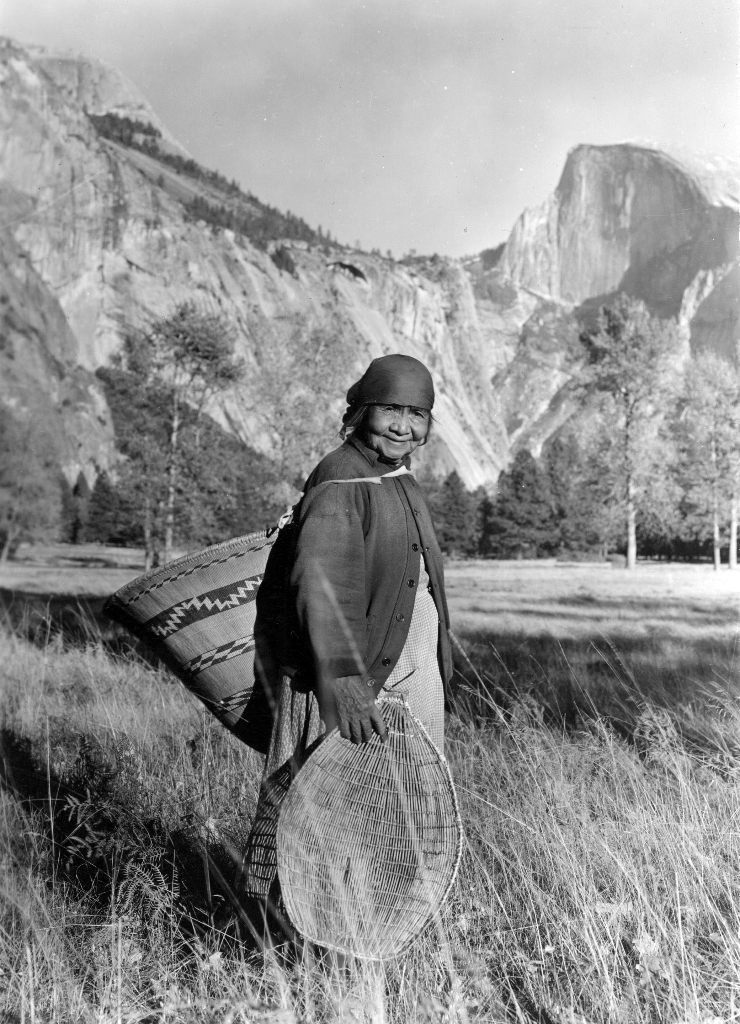
It is believed that people were present in this valley as early as 8,000 years ago. Archeological evidence suggests that about 4,000 years ago American Indian people established permanent settlements here. The oak grove you are in now may have been a principal winter village area. Acorns from the black oaks were a main food source for the area's first people, known as the Ahwahneechee. A typical family would consume as many as 500 pounds of acorns per year.
Look up at "Cholok," Yosemite Falls, and imagine you are a part of a band gathering seeds, roots, bulbs, and fruits for food, or woody materials for baskets, cordage, and tools. Some of your group are hunting deer, or trapping rodents and birds, or taking trout from the river. Your people are trading with others to the west (in the winter) and to the east (in the summer).
For generations, native people lived and died on this land that they loved and cared for, but on March 27, 1851 their way of life was disrupted forever. An organized group of miners calling themselves the Mariposa Battalion tried to remove the Ahwahneechees from Yosemite. Many natives fled to the high country through Indian Canyon. You can see Indian Canyon (also called Lehemite) from this location. It is the first deep canyon to the right of Yosemite Falls. Despite this initial displacement, their culture survived. Later, some gradually returned, found employment, and lived together in small groups here in the Valley. Today, Indian people living in nearby counties demonstrate cultural traditions to park visitors and meet regularly in Yosemite Valley for ceremonies and other social activities.
Is there something we missed for this itinerary?
Itineraries across USA


















































